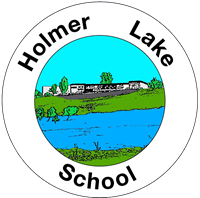Early Years / Foundation
How are pupils assessed at the end of Reception Year? - The Early Years Foundation Stage Profile
The EYFS profile is completed for every child in the final term of their Reception year, and has three main purposes: to inform you about your child’s development, to make the transition to Year 1 smoother, and to help the Year 1 teacher plan a curriculum that will suit all of the pupils in their new class.
What is the EYFS profile?
The EYFS profile is a summary of your child’s attainment at the end of Reception. It’s not a test, and your child cannot ‘pass’ or ‘fail’.
The profile measures your child’s attainment in areas of learning known as Early Learning Goals (ELGs). These are outlined below, with examples of some of the skills and development they show:
Communication and language
- ELG: Listening, Attention and Understanding (following instructions, responding to questions)
- ELG: Speaking (sharing ideas and explanations for why things might happen, expressing feelings using full sentences, including use of past, present and future tenses)
Physical development
- ELG: Gross Motor Skills (showing good control and coordination in large movements, like climbing)
- ELG: Fine Motor Skills (holding a pencil correctly in preparation for handwritingand using other tools like scissors)
Personal, Social and Emotional Development
- ELG: Self-Regulation (demonstrating an understanding of their own feelings, and other people's)
- ELG: Managing Self (showing independence, being able to explain the reason for rules and managing basic hygiene and personal needs)
- ELG: Building Relationships (playing cooperatively with other children and being aware of others' needs)
Literacy
- ELG: Comprehension (for example, being able to retell a story in their own words)
- ELG: Word reading (being able to say a sound for each letter in the alphabet and at least 10 digraphs)
- ELG: Writing (being able to write recognisable letters and simple sentences)
Maths
- ELG: Number (for example, knowing number bonds to 5)
- ELG: Numerical patterns (being able to count up to and beyond 20 and recognising patterns in numbers up to 10)
Understanding of the world
- ELG: Past and present (understanding the differences between events in the past and the present day and talking about the roles of the people in society)
- ELG: People, Culture and Communities (knowing some similarities and differences between different environments and communities in this country and in other countries)
- ELG: The Natural World (exploring the natural world around us and the changes we see in it)
Expressive arts and design
- ELG: Creating with Materials (experimenting with colour, design, texture, form and function using different materials)
- ELG: Being Imaginative and Expressive (exploring stories and narratives in different mediums, including musicand dance)
In each of these areas, the ELGs set out what the average child is expected to be able to do at the age of five.
How are the results reported?
In your Reception child’s EYFS profile, for each of the ELGs, they’ll be given one of the following gradings:
- At the ‘expected’ level of development
- At the ‘emerging’ level of development (in other words, they haven’t quite reached it yet)
If your child isn’t at the expected level of development, the Reception and Year 1 teachers will work together to decide how they can make the transition to Key Stage 1 as easy as possible for them, and how to support them in the coming year.

